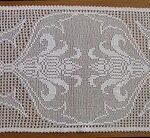If you read my first article about base running tips you will know how to best get on base. Of course once you get on base that is not enough. Now you need to score. So here are some tips on getting around the rest of the bases.
If you’re in a league where the third base coach gives signs to the runners on base then the first thing to do is to look towards him for the signs. A runner should get their signs before the pitcher is even on the rubber and he should look back to the third base coach in between each pitch because different situations could lead to a change in strategy.
Once the pitcher has stepped on the rubber that is when you want to start to take a lead. When a runner takes a lead he shouldn’t just slowly walk a few steps away from the base. Always be in an athletic position ready to move in one direction or the other, much like a fielder. Also keep your eye on the pitcher at all times.
A runner should never get picked off if they are not stealing the base. If the runner is stealing second it’s possible they took too big a lead or got thrown out stealing or jumped too soon. If you’re not stealing a base though, there is no excuse for being picked off.
Once the pitcher starts to deliver the ball a runner wants to take another step or two to get an even better lead. The reasons for this is that it will shorten the distance to the next base and it will also make it easier to start sprinting to the next bag since you’re already moving in that direction. The lead can’t be too big though or you’ll get doubled up on a line drive.
Once the ball is hit one of the most important parts of base running is judging the trajectory of the ball. If a ball is hit and it is a line drive right towards one of the fielders or a high fly ball you want to either wait and see if it’s caught or retreat to first base. If the ball is hit on the ground the runner should be going to second immediately to try and not get forced out.
If the runner is on first and he has decided the ball that was hit is going to land safely in the field somewhere he then has another decision to make. Does he stop at second or go to third? If the ball is hit to center or left field then a runner going from first to second base will be able to see where the ball is hit. When that happens the runner should decipher for himself whether he can make it all the way to third or not. Be careful when deciding to go to third though. A single can score most runners from second base so you don’t want to take a big risk when going to third, only go to third if you know you can make it.
If the ball is hit to the right side of the field a runner going from first to second base will not see it. When that happens the runner must rely on the third base coach to tell him whether to stop at second base or go to third base.
Once you get to third base you want to be careful. First of all, when a runner is leading off, stand in foul territory. Third base is called the hot corner for a reason. Line drives are often hit down the third base line and you could be hit. If the runner is standing in fair territory and a ball hits him he is out. But if the runner is standing in foul territory and the ball hits him it’s just a dead ball. The base runner will still want to lead off and get a jump but be very careful not to be too risky. You’re only 90 feet away from scoring; there is no reason to be too risky when any kind of hit will score you from third.

